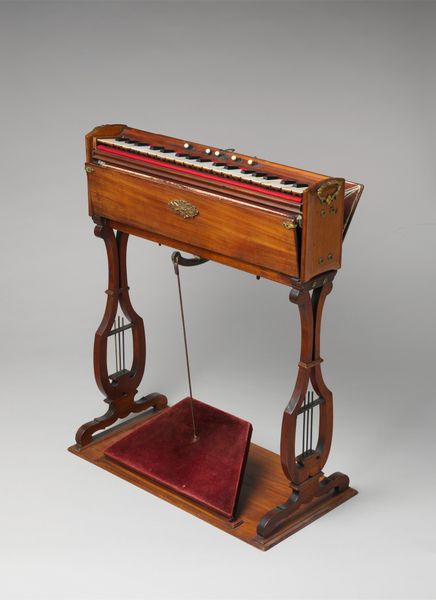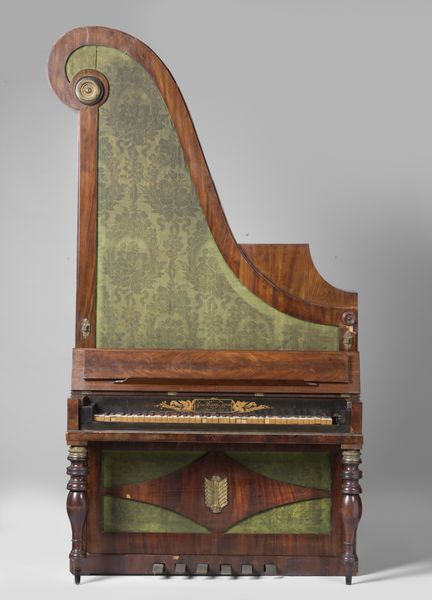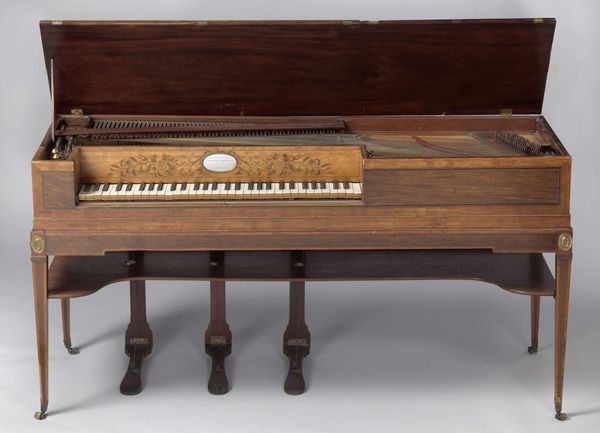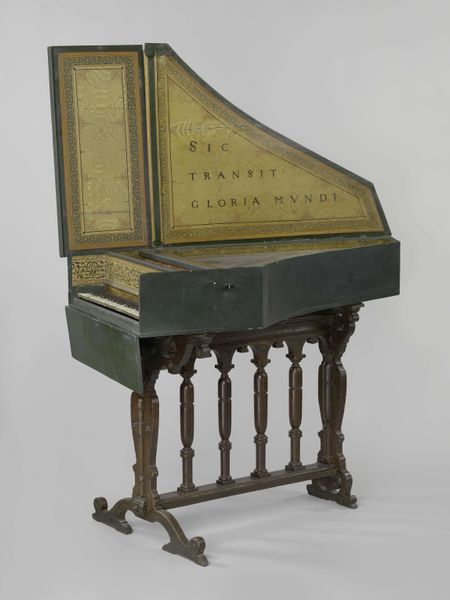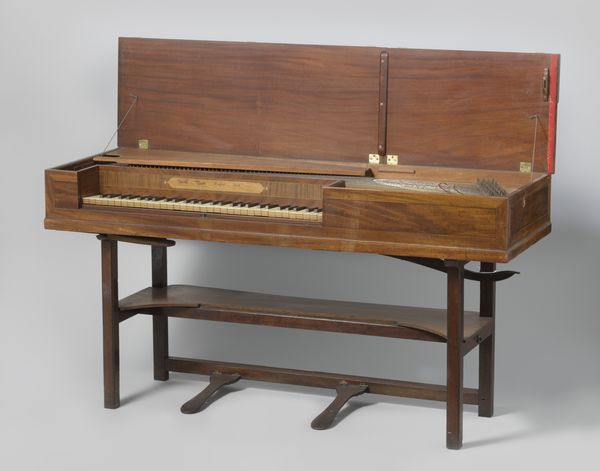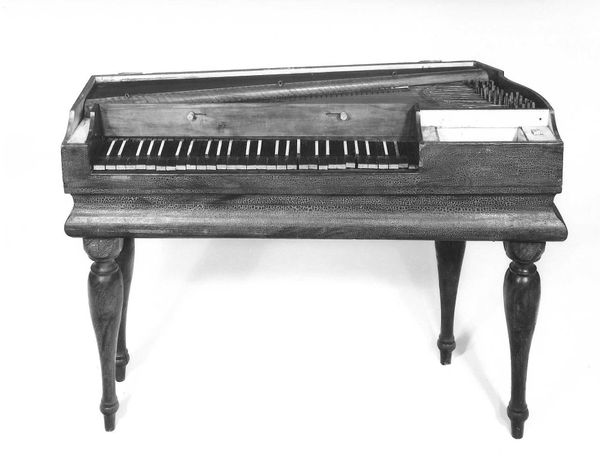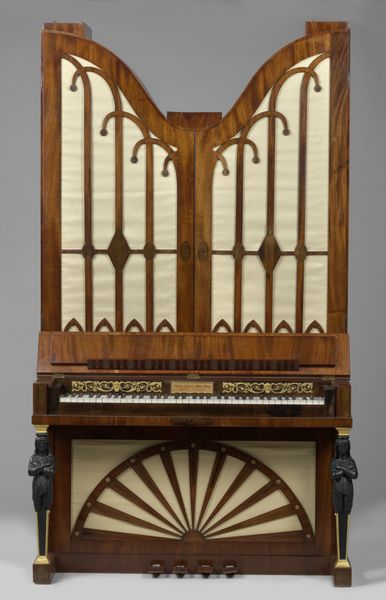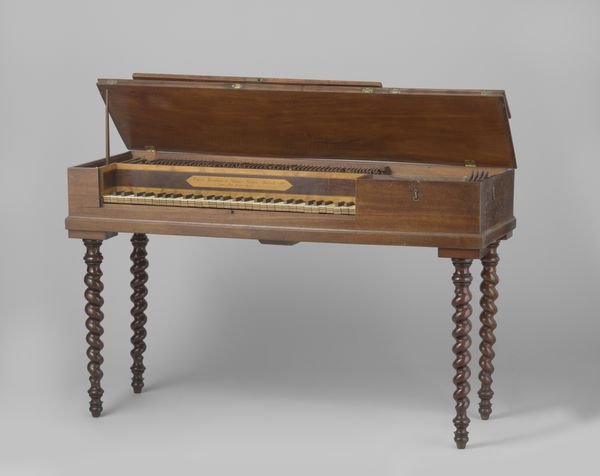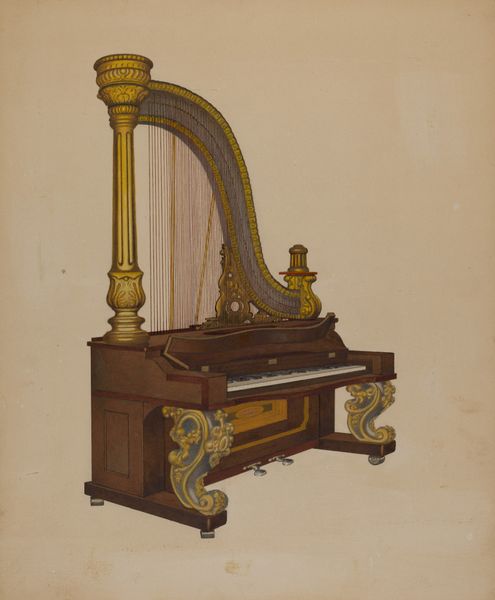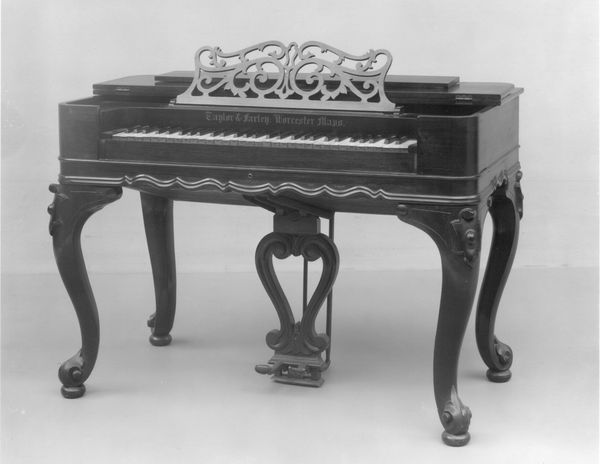
metal, wood
#
metal
#
sculpture
#
romanticism
#
france
#
men
#
wood
#
musical-instrument
Dimensions: Width of chest: 56 cm (22-1/8 in.) Height of chest: 17.6 cm (7 in.) Depth of chest: 11 cm (4-3/8 in.)
Copyright: Public Domain
This is a reed organ, or physharmonika, made by Alexander-François Debain in nineteenth-century France. Debain patented the harmonium in 1842, and this smaller, portable version speaks to a shift in musical culture. Before this, the organ was an instrument inextricably linked with religious institutions, or else the preserve of the wealthy who could house such a huge instrument. But here, the reed organ shrinks the technology of sound production. It became a piece of secular, domestic furniture available to the middle classes. The organ was now something that could be bought and sold like any other commodity. We see this in the organ's design; the elegant dark wood and ornamental metal work are carefully crafted to give the object a fashionable appeal. To understand the organ properly, we might investigate nineteenth-century musical instrument manufacturing, advertising, or even look to popular depictions of music-making in the home. These resources help us understand the organ's place in the social and cultural life of the time.
Comments
No comments
Be the first to comment and join the conversation on the ultimate creative platform.
